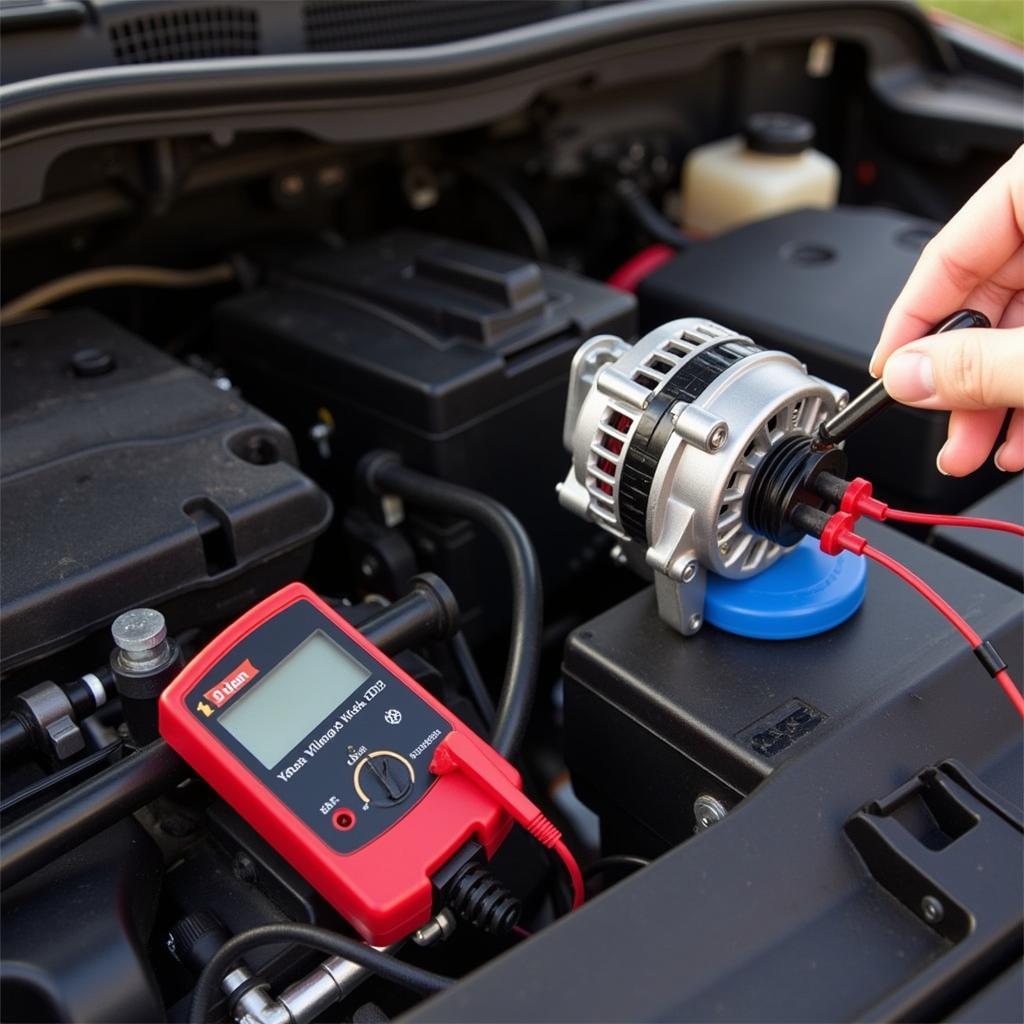A dead car battery can be a major inconvenience. Learning how to measure battery drain is crucial for maintaining your vehicle’s health and avoiding unexpected breakdowns. This guide provides a step-by-step approach to identifying parasitic draws and keeping your battery in top condition.
 Measuring car battery drain with a multimeter
Measuring car battery drain with a multimeter
Identifying the source of a battery drain can sometimes feel like searching for a needle in a haystack, but with the right tools and techniques, you can pinpoint the culprit. Let’s delve into the process of measuring battery drain and troubleshooting common issues.
Understanding Battery Drain
What is Battery Drain?
Battery drain, also known as parasitic draw, refers to the gradual discharge of your car battery when the vehicle is off. A small amount of drain is normal, powering systems like the clock and alarm. However, excessive drain can leave you stranded with a dead battery.
Why is Measuring Battery Drain Important?
Measuring battery drain is essential for several reasons:
- Preventing Unexpected Breakdowns: A dead battery can leave you stranded at the most inconvenient times.
- Extending Battery Lifespan: Excessive drain significantly reduces the lifespan of your car battery.
- Saving Money: Replacing car batteries can be costly. Identifying and fixing drains prevents unnecessary expenses.
- Diagnosing Electrical Issues: Measuring battery drain can help pinpoint faulty components or wiring problems.
If your car isn’t starting and you suspect a battery issue, check out our guide on what to do if your key car battery low.
How to Measure Battery Drain: A Step-by-Step Guide
Gathering Your Tools
You’ll need a few essential tools:
- Digital Multimeter: This is the primary tool for measuring current draw.
- Test Light (Optional): Helpful for quickly identifying circuits with current flow.
- Protective Gear: Safety glasses and gloves are recommended.
Disconnecting the Negative Terminal
- Turn off all accessories and lights in your car.
- Open the hood and locate the negative battery terminal (marked with a “-” symbol).
- Carefully disconnect the negative battery cable.
Connecting the Multimeter
- Set your multimeter to measure DC current (amps).
- Connect the red probe of the multimeter to the negative battery cable.
- Connect the black probe to the negative battery terminal.
Observing the Reading
The multimeter will display the current draw. A reading of 50 milliamps (0.05 amps) or less is generally considered normal. Higher readings indicate a potential problem. Sometimes, a simple fix like ensuring all lights are off can resolve the issue, as detailed in our guide on what to do when your car wont start after jump.
Identifying the Culprit
If the reading is high, you’ll need to isolate the source of the drain:
- Remove fuses one at a time: Observe the multimeter reading after removing each fuse. A significant drop in current indicates the circuit associated with that fuse is the culprit.
- Consult your vehicle’s wiring diagram: Once you’ve identified the circuit, use the diagram to pinpoint the specific component causing the drain. This might involve testing individual components like relays, switches, or modules.
Common Causes of Battery Drain
- Faulty Alternator: While not a direct drain, a bad alternator can prevent the battery from charging properly, leading to a dead battery.
- Interior Lights: A dome light or glove box light left on can drain the battery overnight. If you’re experiencing this issue, you might find our guide on mini cooper dead battery helpful.
- Malfunctioning Door Switches: A faulty door switch can trick the car into thinking a door is open, keeping interior lights on and draining the battery.
- Aftermarket Accessories: Incorrectly installed aftermarket accessories, such as stereos or alarms, can draw excessive current. If your car battery reads 11 volts and won’t start, our guide on car battery 11 volts wont start offers valuable troubleshooting tips.
Conclusion
Measuring battery drain is a straightforward process that can save you from the frustration of a dead battery. By following the steps outlined in this guide, you can identify and address parasitic draws, ensuring your car starts reliably every time. If you have completely lost power, see our article on what to do if my car has no power and wont start. Don’t let a dead battery leave you stranded – take control of your car’s electrical system and keep it running smoothly.

